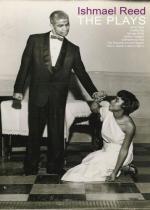|
This section contains 2,219 words (approx. 8 pages at 300 words per page) |

|
Central to understanding Ishmael Reed's fiction is an analysis of the ways in which he creates and uses literary folklore. It has for him dual purposes: it is practical and theoretical. Practically it serves to advance the plot, provide structure, defend and raise questions about the nature of society. Theoretically it has at its disposal a vast and largely untapped reservoir of African and Afro-American history, folklore and myth. The components of the practical and theoretical categories are intricately interwoven into a fiction which raises external questions of verisimilitude … that are largely absent in the literary folklore of Killens, Chesnutt, Hurston and Alice Walker. Reed labels this confluence of history's external realities and myths' internal or subjective realities "La Bas," a term deeply associated with HooDoo.
In Reed, then, literary folklore can be seen as a structured innovation. The structure relates largely to historical parallels. The history, however...
|
This section contains 2,219 words (approx. 8 pages at 300 words per page) |

|


